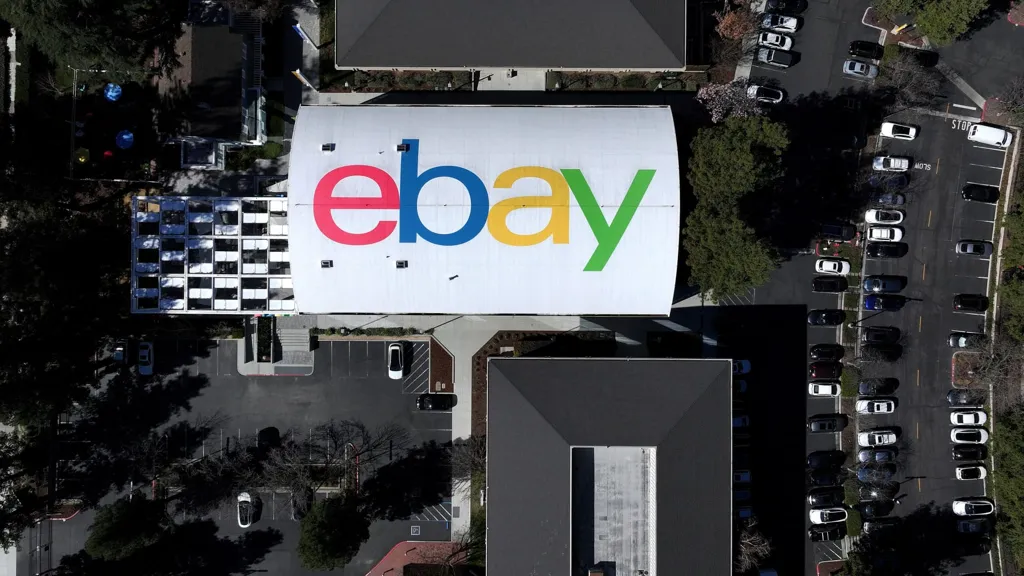We've talked here about how compelling chart patterns can be uncovered -- either through screening or by methodically flipping through charts one by one. I do both every day. But sometimes, the best setups surface in less conventional ways. Take last Friday: the S & P 500 dropped 2%, one of its worst single-day declines in the last three years. Only 18% of index components finished higher, and the hardest-hit sectors were large-cap growth: XLK (Tech), XLC (Comm Services) and XLY (Consumer Discretionary). Just six out of 135 stocks in those three sectors managed to close green -- roughly 4%. That's a brutal day for the biggest growth names.
But on days like that, I find it especially worthwhile to examine the few names that did advance -- especially within the hardest-hit groups. EBay stood out. Why? Because it's still in an uptrend -- a rare trait for any U.S.-listed equity right now, let alone one typically bucketed as a "growth" stock. Since last October, EBAY has rallied off two post-earnings downside gaps -- most recently in February -- and held firm throughout. I discussed this, along with S & P 500 and Communication Services Select Sector SPDR (XLC), on CNBC's Worldwide Exchange with Frank Holland this past Monday morning. There's still work to do before reclaiming the highs just below 72, but if the broader market starts to stabilize, EBAY could make another run at that breakout zone.
For the setup to stay intact, holding above the $61-$62 support area is key -- especially with the 200-day moving average sitting right there. Again, it was EBAY's uptrend and potentially bullish setup that initially caught my eye -- but in the context of a volatile market, it's also a clear sign of relative strength. In fact, EBAY has been outperforming since mid-December, and that strength has prompted the EBAY/XLY ratio chart to form what now appears like a potential bullish inverse head and shoulders pattern.
The next step? A breakout to new 52-week highs.
Lastly, here's a look at EBAY's lifetime chart -- and it's a compelling one. The stock appears to be building one of the largest multi-year bullish patterns in its history. In each of the prior three instances where EBAY spent years forming a base, the subsequent breakouts also lasted for years. And while EBAY likely would've shown up in my normal screens or chart review process, digging into the few names that held up on a brutal sell-off day helped me spot it sooner. That approach uncovered not just a constructive short-term setup, but bullish developments on both a relative strength and long-term structural basis.
If nothing else, it's an exercise that I recommend trying, especially if the market's volatility is going to persist in 2025.
